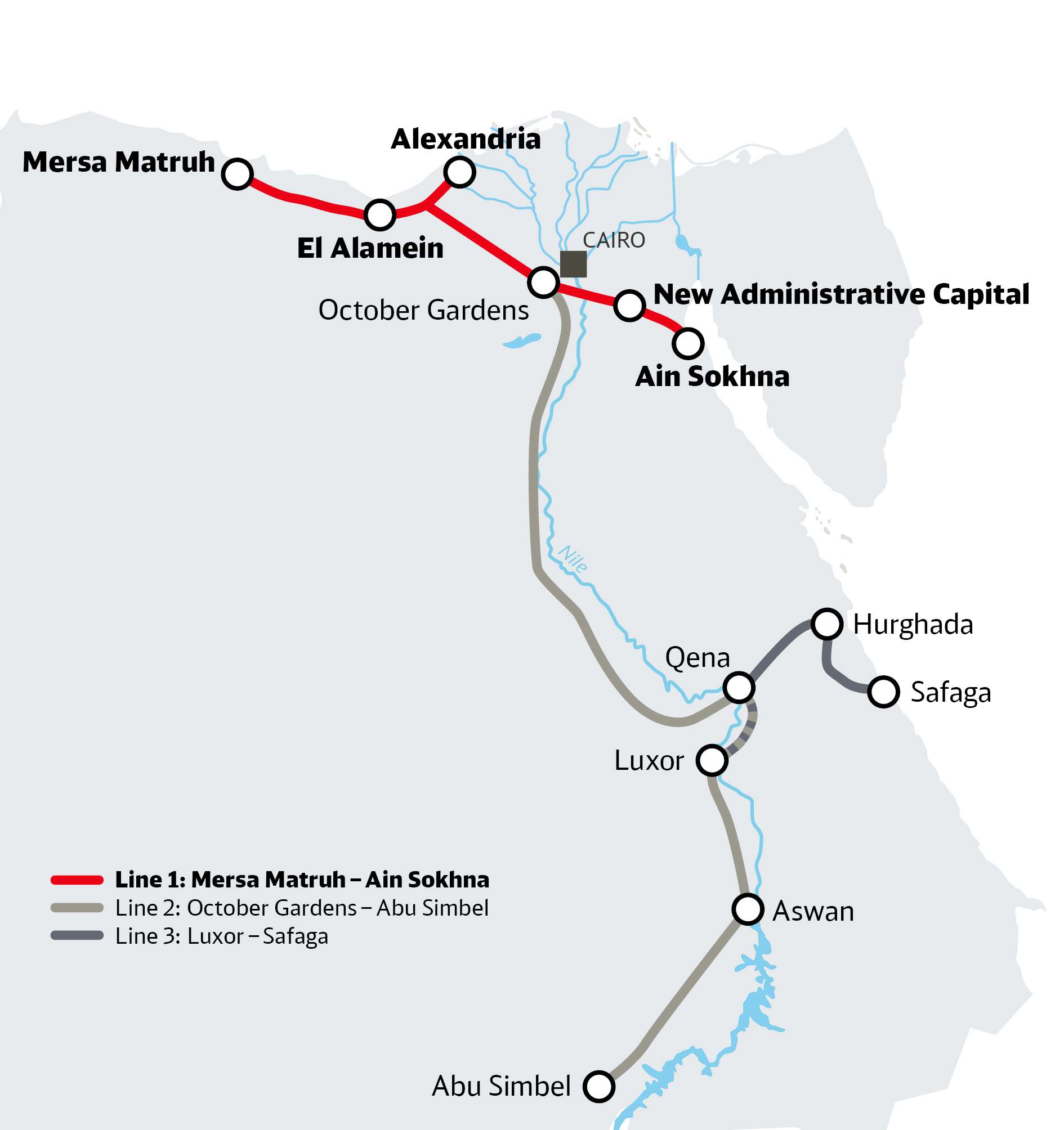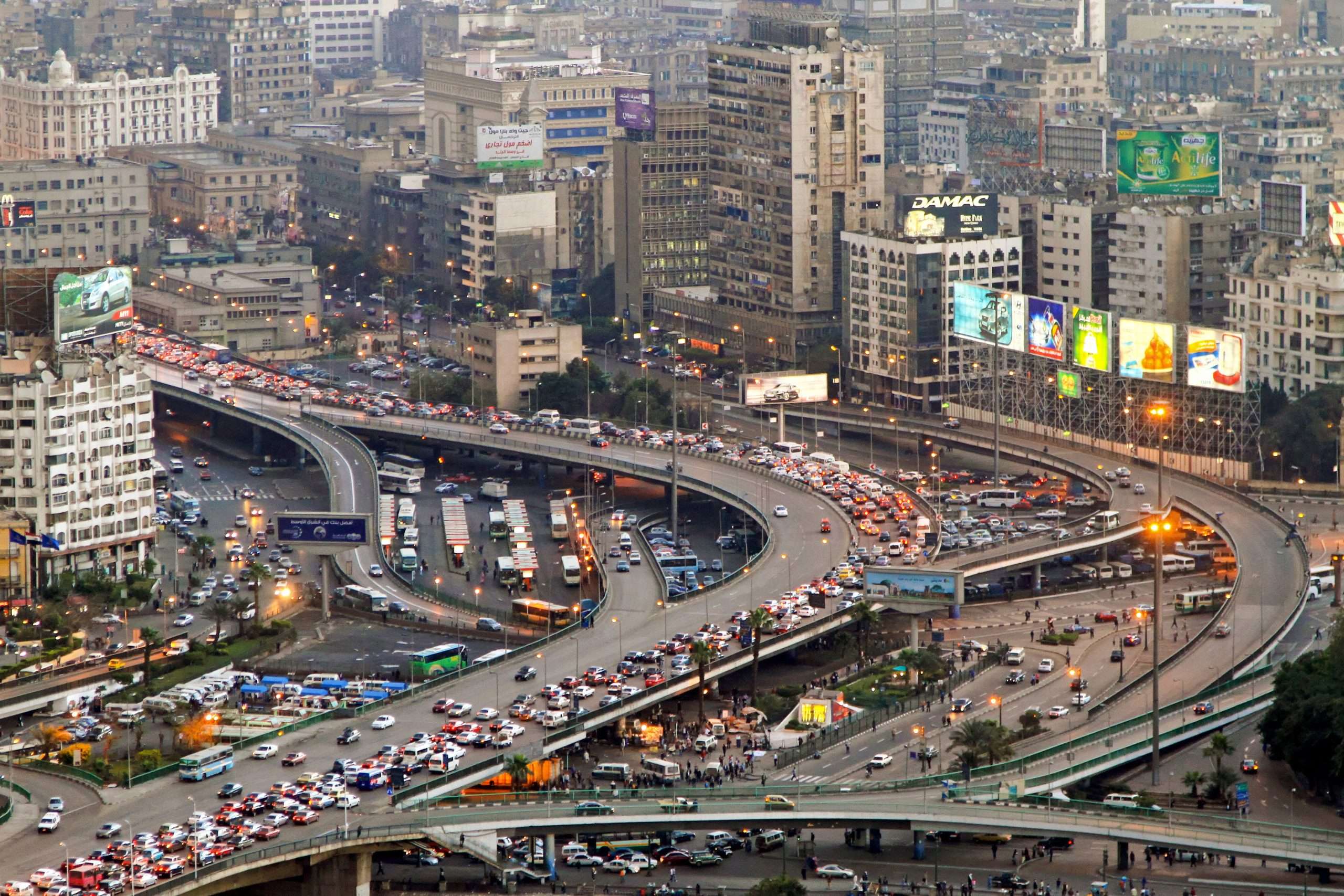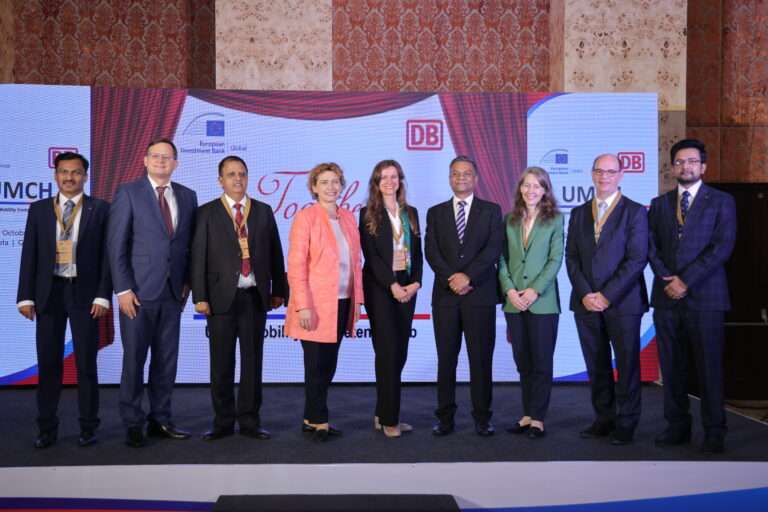“Suez Canal on Rails” – A New Era for Passenger and Freight Transport in Egypt
DB International Operations, part of DB E.C.O. Group, together with its trusted partner Elsewedy Electric, will be responsible for operations and maintenance for the first high-speed rail network in Egypt. The Suez Canal on Rails will connect the Mediterranean and the Red Sea, marking the start of a new era in passenger and freight rail transport in Egypt.

Contact
A new era for Egyptian rail transport
The planned rail project, known as the Suez Canal on Rails, will connect the Mediterranean with the Red Sea. Rail transport in Egypt will be getting a major upgrade. A network of approximately 2,000 kilometers with three lines and more than 60 stations is planned.



DB International Operations (DB IO) will assume responsibility for operations and maintenance of the network’s Green Line as part of a long-term operator contract. This line will connect Al-Sokhna on the Red Sea to Marsa Matrouh on the Mediterranean Sea through the New Administrative Capital of Cairo.
The new rail link will benefit not only major cities, but smaller municipalities and suburbs as well. The project will help increase social mobility, create new economic opportunities for local companies, and improve access to jobs, health, and educational facilities. Freight transport between the ports and the interior of the country will also be more efficient and environmentally friendly.
German rail expertise is a hot commodity around the world
With the high-speed rail project in Egypt, DB International Operations further expands its contribution to sustainable and efficient mobility worldwide, drawing on valuable experience gained from major rail partnerships in India and Uruguay. DB IO will take over the operation of infrastructure and vehicles for high-speed, regional and freight transport and maintenance for stations and depots with its local partner Elsewedy Electric.
Big benefits for society and the environment
Egypt is one of the fastest growing countries in the world. According to forecasts, the population will grow from 105 million to around 160 million by 2050. The new high-capacity rail system will play a crucial role in the sustainable expansion of public transport infrastructure and will serve as a regional flagship project for an eco-friendly modal shift in passenger and freight transport.
Rail operations are set to begin in the coming years, moving up to one million passengers and 8,500 tons of goods daily. The project is also intended to improve road safety and reduce carbon emissions since electrified rail uses more renewable energy sources than bus, car, and non-electrified rail transport.
With the signing of the Operations and Maintenance contract at the TransMEA exhibition 2025, the partnership between DB International Operations, Elsewedy Electric, and the National Authority for Tunnels has officially been sealed. This marks the transition from planning to implementation — and the beginning of a long-term collaboration to deliver world-class rail operations and maintenance for Egypt’s first high-speed network.
Editor’s note: This article was updated in November 2025.





